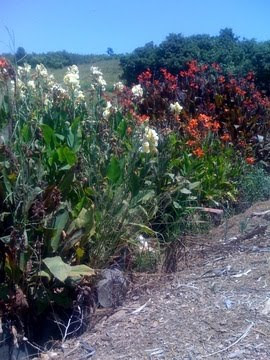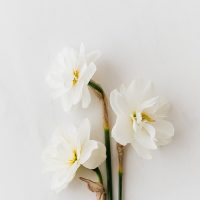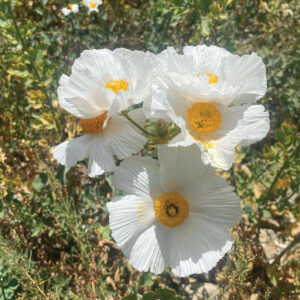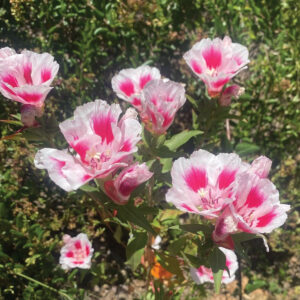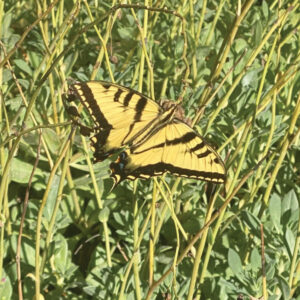Autumn is upon us, so it is time to start thinking about Spring! Sounds counter intuitive, but when it comes to planting bulbs for the springtime, autumn is the time of the year to get your garden in order. Bulb planting time for the California Coast is mid-October through January.
If you live in Southern California like I do you experience relatively long cool winters, very hot to moderate dry summers and low moisture, this is quite good for growing many bulbs, especially those native to dry climates. Since So Cal is very diverse it is important that you take your specific conditions into consideration, if you live in the mountains you must take the altitude into consideration, if you live in the low desert you need to take that heat into consideration. If you live in a valley, you have another more sheltered environment and if you live near the coast make sure to take the salt spray and higher amount of moisture in the air into consideration
Let’s start with the basics; autumn bulb planting should begin when nighttime temperatures stay between 40-50°F. The literature says that it is important that you plant approximately six weeks before the ground freezes to allow sufficient time for rooting. In our case, that may not happen until January (if at all) so I guess it is best to go with the nighttime temperatures. Bulbs take root better in cool soils and will protect themselves from freezing as they acclimate to the soil. Thoroughly water the bulbs after planting this aids the rooting process.
Apply a slow release bulb fertilizer (I like an organic brand) to the top of the ground. This will supply fertilizer for the bulb later in it’s life (second year bloom) as the bulb has all the fertilizer it needs for the first year built right into it! NOTE: I read something interesting about bone meal – the modern day versions of bone meal have little fertilizing properties and they attract rodents and dogs that will dig up your bulbs in search of bones… I now think twice about using bone meal. Also, if you live in a cold weather area add a layer of mulch to the beds where you planted the bulbs when the temperatures drop, to keep the soil at a consistent temperature.
There is a variety of spring flowering bulbs to choose from, so it is important that you take into considerations a few different factors. One factor is how the bulbs grow in your garden. Do you want bulbs that last for many years and remain in the same area of your garden, or do you want bulbs that multiply and add to your garden each year? First factor then is Perennializing or Naturalizing bulbs. Here’s the scoop.
Perennializing – these return for several years. The following is a list of Perennializing Bulbs:
Colchicum
Daffodil
Globe Allium
Hyacinth
Tulip
Naturalizing – these return and multiply. The following are Naturalizing Bulbs:
Allium
Crocus
Grape Hyacinth
Tulip
Some Narcissus (Daffodils)
Iphieon
You might think, why wouldn’t I want my bulbs to multiply? Let’s think this through – if you have a small bed with not much room and a limited amount of space for other plants why would you plant naturalizing bulbs that would interfere with your other beautifully planted shrubs and perennials yet only bloom for a short period of time? On the other hand if you have the room and want the bright swaths of spring color… go for it!
Another consideration for your bulb collection is when they bloom, check out the list below for boom times, so that when you plant you will have many months of flowers and color.
Very early Spring: Chionodoxa, Narcissus (Early Daffodils), Snow Crocus
Early Spring: Crocus verunus, Early Tulips, Hyacinth, Trumpet Daffodils
Mid Spring: Giant Daffodils, Grape Hyacinth, Mid Season Tulips, Muscari, Ipeion, Liatris
Late Spring: English Blue Bells, English Wood Hyacinth, Golden Bells Daffodils.Late season Tulips
Late Spring/Early Summer: Asiatic Lilies, Allium, Hardy Gladiolus
Mid Summer: Canna, Crocosmia, Dahlia, Gladiolus, Iris, Lilium,
Later Summer: Canna, Dahlia
Fall: Colchium – Authum Crocus (these are poisonous!), Fall Blooming Crocus Autumn Daffs – Sternbergia lutea Spider Lily (not supposed to grow in our area but…see photo).
Now it’s time for you to plan, look at your garden and see where you would like a little extra spring color. Have fun! Play with them. Draw a small sketch and decide how many areas of color you want to add. Your sketch is a good tool to keep, so when you add more plants to your garden you know NOT to dig up your bulbs. You can also still divide and plant Iris, and Day Lily plants and if you need more information, look back on the older blog posts and read all about those wonderful perennials. I usually plant in groupings of three, which give a nice burst of color. If you have more space five would do well too. Remember use those Feng Shui numbers, 3 – 5 – 9. They are great for landscaping too!
Here are a two of my favorite links to mail order bulbs, but be sure to visit your local nursery, as they are very likely stocked with bulbs for planting right now.






